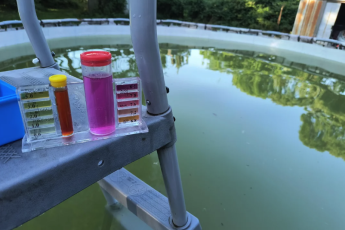Everything You Need To Keep Your Garden In Tip-Top Condition

Maintaining a garden in tip-top condition requires dedication, knowledge, and the right tools!

Whether you’re tending to a sprawling backyard or a modest balcony garden, certain essentials can help keep your green space thriving. Here’s everything you need to know to keep your garden looking its best.
1. Quality Soil and Compost
Healthy plants start with healthy soil. Ensure your soil is nutrient-rich and well-draining. You can improve soil quality by adding organic compost, which enriches the soil and helps retain moisture, essential for plant health. Regularly check your soil’s pH and nutrient levels to effectively tailor your composting and fertilizing strategies.
2. The Right Tools
Having the right garden hand tools makes your gardening tasks easier and more efficient. Essential tools include:
- Spades and shovels for digging and moving soil.
- Trowels for planting and weeding.
- Pruning shears for trimming and shaping plants.
- Garden forks for turning soil and compost.
- Rakes for clearing leaves and debris.
- Hoses and watering cans with adjustable nozzles to control water flow. Invest in tools with ergonomic designs to reduce strain and enhance comfort during use.
3. Watering Systems
Consistent watering is crucial, especially in hot and dry conditions. Consider installing a drip irrigation system for larger gardens, which delivers water directly to the plant roots and can be automated with timers. Regularly using a watering can or garden hose may suffice for smaller spaces. Always water early in the morning or late in the evening to minimize evaporation.
4. Mulch
Mulch helps retain soil moisture, suppresses weeds, and keeps soil temperatures stable. Organic mulches like wood chips, straw, or grass clippings also contribute nutrients back into the soil as they decompose. Apply mulch around your plants, leaving some space around the stem bases to prevent rot.
5. Pest and Disease Control
Keep an eye out for signs of pests and diseases. Early detection is key to managing outbreaks. Use environmentally friendly options wherever possible, such as neem oil, soap sprays, or introducing beneficial insects like ladybugs. Regularly clean your garden tools to prevent the spread of pathogens.
6. Fertilizers
Plants need various nutrients at different stages of their growth. Use a balanced fertilizer that suits the specific needs of your plants. Organic options like seaweed, fish emulsion, and bone meal are excellent choices for sustainable gardening.
7. Plant Supports
Tall plants and most vegetables benefit from proper support. Structures like stakes, trellises, or cages help plants grow upright and can increase their exposure to sunlight, improving yield and health.
8. Seasonal Maintenance
Gardening is not a set-it-and-forget-it activity. Seasonal maintenance, including spring pruning, fall cleanup, and refreshing mulch, is vital. Additionally, as part of your seasonal tasks, consider laying down gopher wire to protect your garden beds from pests throughout the year. Adjust your gardening activities based on the season and local weather conditions to protect your plants and prepare them for the next growth phase.
9. Gardening Knowledge
Continuously educate yourself about gardening techniques, plant requirements, and local environmental factors. Resources such as books, local gardening clubs, and online forums can provide invaluable advice and help you grow as a gardener.
10. Patience and Observance
Gardening requires patience and regular monitoring. Spend time in your garden to understand its microclimate and observe changes in plant health. This hands-on experience is often the best way to learn and adapt your gardening practices for better results.
By equipping yourself with the right knowledge, tools, and materials, you can keep your garden in pristine condition, ensuring it remains a lush, vibrant sanctuary for years to come.








